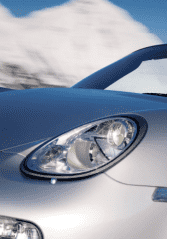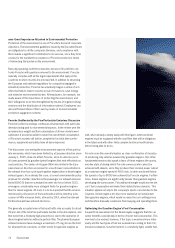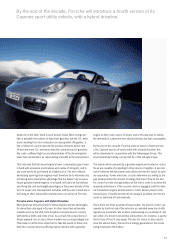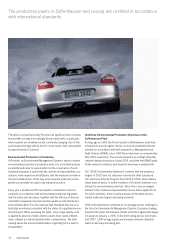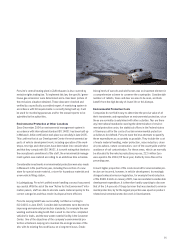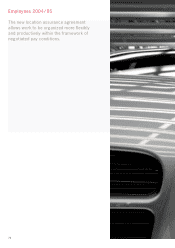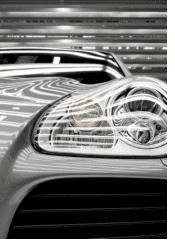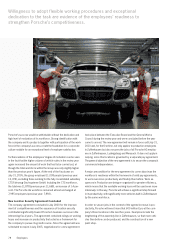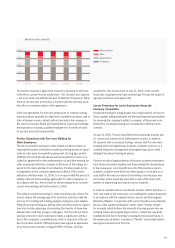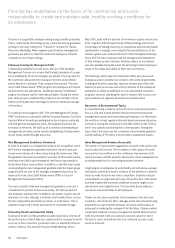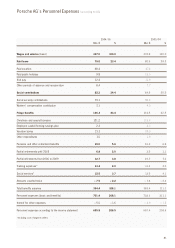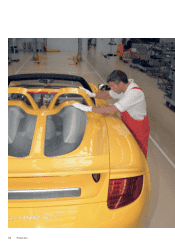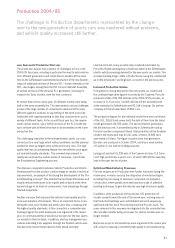Porsche 2004 Annual Report Download - page 77
Download and view the complete annual report
Please find page 77 of the 2004 Porsche annual report below. You can navigate through the pages in the report by either clicking on the pages listed below, or by using the keyword search tool below to find specific information within the annual report.
73
By the end of the decade, Porsche will introduce a fourth version of its
Cayenne sport utility vehicle, with a hybrid driveline.
diesel oil on the other hand a much heavier liquid. More energy per
liter is available from diesel oil than from gasoline, but the CO2emis-
sions resulting from its combustion are also greater. Altogether, a
liter of diesel oil can be expected to produce between twelve and
14 percent more CO2emissions than the same amount of gasoline;
this casts a different light on any interpretation of the diesel engine’s
lower fuel consumption as representing a benefit to the environment.
This indicates that the diesel engine’s lower consumption goes hand
in hand with emissions (particulates and oxides of nitrogen), and in
any case has to be purchased at a higher price. The aim of those
developing spark-ignition engines must therefore be to eliminate any
remaining fuel consumption advantage that the diesel may possess.
Future gasoline-fueled engines, it is hoped, will use less fuel without
sacrificing the cost and weight advantages or the power density of this
form of power unit. Development activities with this aim in mind are in
full swing at other automobile manufacturers as well as at Porsche.
Porsche plans Cayenne with Hybrid Driveline
More generous emission limits for diesel engines and tax advantages
for diesel fuel only apply in Europe. In other important automobile
markets such as the USA, both driveline concepts have to comply
with identical limits and rates of tax. As a result, the proportions of
diesel-engined cars in use in these markets are correspondingly low.
This makes it all the more important to take the needs of these mar-
kets into consideration by offering hybrid vehicles with a gasoline
engine as their main source of power and in this way also to satisfy
the demands of customers who attach priority to low fuel consumption.
By the end of this decade, Porsche plans to launch a fourth version
of its Cayenne sports off-road model with a hybrid driveline; this
will be developed in cooperation with the Volkswagen Group. This
environmentally friendly concept will be of the full-hybrid type.
The vehicle will be powered by a gasoline engine and an electric motor;
these are capable of propelling it either alone or together. A second
clutch between the two power units allows the electric motor to oper-
ate separately. Power electronic circuits determine according to the
gas pedal position the amount of energy that has to flow to the elec-
tric motor from the storage battery at the rear in order to achieve the
required performance. If the second clutch is engaged, both the inter-
nal combustion engine and the electric motor deliver power to the
transmission. If insufficient electrical energy is available, the electric
motor is switched off automatically.
Since there are three possible driving modes, the electric motor can
operate by itself not only if the vehicle is accelerated away from traffic
signals at a moderate rate or when maneuvering on a parking lot, but
also when it is driven in residential areas where, for instance, a speed
limit of only 30 km/h may apply. The electric motor is also used to
slow the vehicle down, the electrical energy generated in this mode
being returned to the battery.










